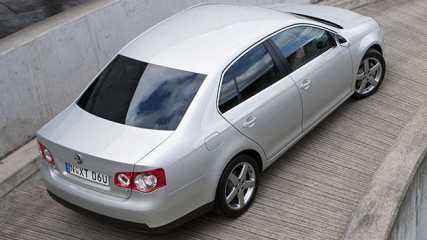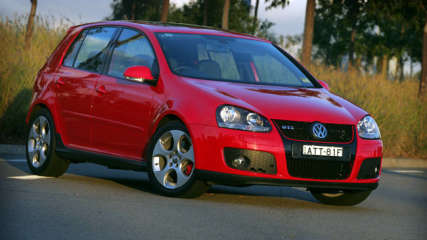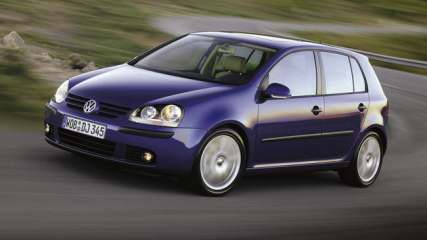Volkswagen Golf GTI 2005 review: road test
By CarsGuide team · 21 Jul 2005
The name, or a derivative, can be found on little cigarette tins like the Proton Satria, on a Mitsubishi Verada, various Subarus, Ford and Holden muscle cars, Alfa Romeos, some brilliant Porsches and, of course, Italian heroes from the hallowed stables of Ferrari and Maserati.Gran Turismo, one and all? We don't think so. Without being too literal, or pedantic, about the GT moniker, the arrival of the latest Volkswagen Golf GTI (the "I" means (fuel) Injection in this case or, from earlier times, International) has got us thinking about what it all means.Should the G also signify Greatness? Genius? Just as some of the cars we've listed meet these criteria, others — including previous iterations of the Golf — have instead relied on the combination of a spirited engine, stiffer springs, a sticker on the backside and a hard-working marketing machine.Enter the fifth generation. In a marked contrast to all other Golf GTIs sold in Australia — the 1976 original, heralded as the world's first hot-hatch, didn't make it here — this one has what it takes.In terms of design, driver controls, driveline and chassis, right across the board Volkswagen seems to have at last understood what "GTI" should stand for. It has executed its GTI in brilliant fashion and has introduced the car to Australia for less than $40,000.For this, a turbocharged and intercooled version of the Volkswagen group's 2.0-litre direct-injection FSI engine is one of the main attractions.It delivers 147kW of power at 5100rpm and 280Nm of torque from a low 1800rpm to 5000rpm, has a high 10.5:1 compression ratio, and when combined with the six-speed twin-clutch DSG (direct shift gearbox), it is claimed to be able to send the car from rest to 100km/h in 6.9 seconds — three-tenths quicker than the standard six-slot manual.These fall short of best-in-class times, and wheelspin and violent shuddering of the front wheels can be issues to contend with from standing-start take-offs (especially when the ESP is turned off). However, the manner in which the engine and gearbox combine across a variety driving conditions is outstanding.Power is delivered in such a smooth, linear and, above all, muscular fashion that turbo lag or other negative thoughts never enter the driver's mind. Instead, thoughts tend to focus on the burbling exhaust, the faint whistle of the turbo, the beautiful responsiveness throughout the rev range and the smoothness, seamlessness, quickness and damn cleverness of DSG.Smart enough to preselect gear ratios, DSG feels more like a computer-controlled manual than a normal automatic and will not suit those who value the ultimate control of a conventional DIY gearbox.Gears can be changed via steering wheel paddles or the centre console gearlever, but the electronic brain will still refuse downshift requests that could send engine revs near redline and will upshift without asking at around 7000rpm. So, stick to the rules, and hover in the aggressive Sport mode (which holds gears at surprisingly high revs) whenever the mood takes, and the Golf feels great. Just like a GTI should.These impressions extend into other areas as well. Some serious work on the chassis has seen the car lowered 15mm and firmer springs and dampers and a stiffer rear stabiliser bar introduced with the multi-link rear suspension. The electro-mechanical steering has been reprogrammed for a quicker response and meatier feel, and the disc brake diameters have increased to 312mm front, 286mm rear.Out on the road, in demanding conditions, the brakes prove to be responsive, powerful and able to withstand a hammering. The steering, conducted via a beaut thick-rimmed multi-function tiller, is communicative, direct and free from torque steer or that other front-drive annoyance: steering kickback across rough corners.And the handling is about as involving as it gets in front-drive hatches.It darts between turns, maintains excellent balance and control, sits flat and, shod with low-profile 225/45 R17 Continentals, sucks hard on the bitumen in corners. The ESP, recalibrated to suit enthusiastic driving, stays unobtrusive while the inherent firmness in the ride never becomes tiresome or harsh. All this is enjoyed from a fabulous driving position, which has a full range of steering and seat adjustment (including lumbar) to suit all preferences and sizes. The front seats, covered in $2990 leather on our test car and with "GTI" embossed on the anti-whiplash head restraints, offer high levels of comfort and excellent support under the ribcage and thighs.The DSG shifter and dash controls are well-designed and close to hand, and the main instrument gauges are set out in a conventional format (turning blue at night, and with a speedo running to 300km/h) ahead of the driver.The cabin has dark tones interspersed with aluminium highlights, and overall fit and finish — which we've found to be a hit-and-miss affair with VWs of late — is good in the South African-built machine. The one disappointment is the use of hard plastics on lower-dash, centre console and door trims.Room and amenities in the rear seat and cargo area are acceptable, although a space-saver spare wheel is included. Effective dual-zone climate-control air-conditioning, a thumping 10-speaker six-CD stereo, trip computer (showing an excellent 9.5 litres per 100km for our test), cruise control, six airbags, a tyre pressure monitor, auto-dimming rearview mirror, front and rear foglights and an alarm are all onboard.Greatness? Genius? Golf GTI? The answer should now be obvious.





